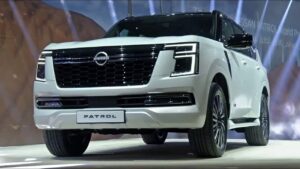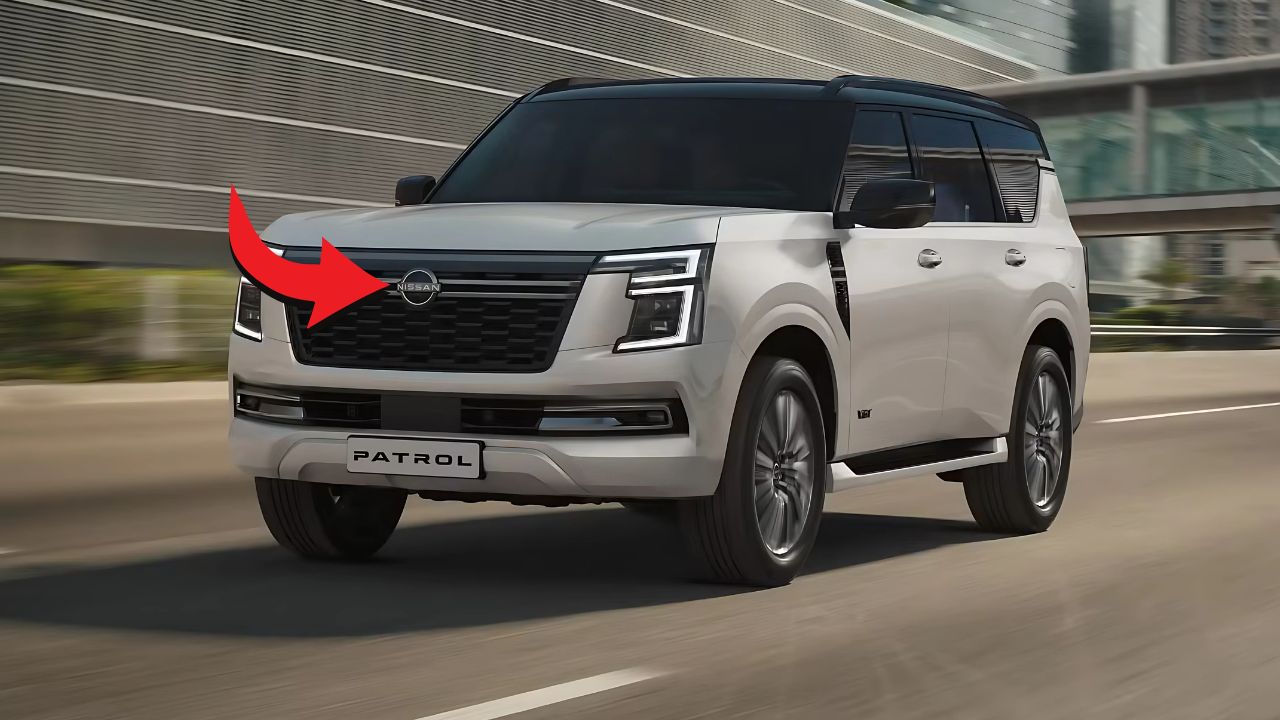The automotive landscape is witnessing a remarkable transformation as Nissan prepares to launch its groundbreaking Y63 Patrol, featuring an innovative fusion of Japanese engineering excellence and authentic Australian manufacturing prowess. This isn’t just another vehicle update—it represents a bold statement about the future of automotive collaboration between nations and the enduring strength of Australian industrial capability.
After fourteen years of faithful service, the venerable Y62 Patrol is preparing to pass the torch to its successor, and what a successor it promises to be. The new Y63 generation doesn’t merely improve upon its predecessor; it completely reimagines what a flagship off-road vehicle can achieve in today’s demanding automotive environment.
The Heart of Australian Innovation
Deep in the industrial heartland of Dandenong South, Victoria, approximately forty kilometers southeast of Melbourne’s bustling central business district, lies a manufacturing facility that exemplifies Australian automotive excellence. The Nissan Casting Australia Plant has been quietly operating for over four decades, and now finds itself at the center of one of the most significant vehicle launches in recent memory.
Every single Y63 Patrol that rolls off production lines worldwide—whether destined for the rugged outback of Australia, the highways of North America, or the challenging terrains of the Middle East—carries within it a crucial component forged by Australian hands. The final drive differential housing, manufactured exclusively at this Victorian facility, represents far more than a mechanical component; it embodies the precision, reliability, and innovative spirit that Australian manufacturing brings to the global automotive stage.
This isn’t merely a symbolic gesture toward local content. The differential housing serves as one of the most critical components in the vehicle’s drivetrain system, responsible for transferring power from the engine to the wheels while allowing them to rotate at different speeds during cornering and off-road navigation. When your Patrol is crawling over rocky terrain or navigating tight mountain passes, this Australian-made component is working tirelessly to ensure smooth, reliable power delivery.
Engineering Excellence Meets Manufacturing Heritage
The Nissan Casting Australia Plant represents a remarkable success story in modern manufacturing. With nearly 200 highly skilled staff members working across three shifts daily, the facility produces an staggering 1.2 million individual components annually. These parts don’t just serve the Australian market—they’re distributed to Nissan assembly plants and affiliate facilities across Japan, the United States, Thailand, and Mexico.
What makes this facility particularly special is its recent achievement of official Australian Made certification. This certification process required Nissan to demonstrate that imported aluminum ingots undergo significant transformation during the manufacturing process, qualifying them as genuinely Australian-made products. As a charming nod to their origin, each differential housing features a small kangaroo stamped into the casting—a subtle but proud declaration of Australian craftsmanship.

The plant’s capabilities extend far beyond the Patrol program. It produces components for electric vehicles, hybrid systems, and traditional powertrains, making it a true center of excellence for Nissan’s global operations. Components manufactured here find their way into vehicles including the British-made Nissan Qashqai, the innovative Leaf electric vehicle, and various e-Power hybrid systems.
Revolutionary Powertrain Technology
The Y63 Patrol marks a significant departure from its predecessor’s naturally aspirated approach. Gone is the legendary 5.6-liter V8 engine that powered the Y62 generation, replaced by an thoroughly modern 3.5-liter twin-turbocharged V6 powerplant that delivers performance figures that would have seemed impossible just a few years ago.
This new engine produces an impressive 317 kilowatts of power and a massive 700 Newton-meters of torque, representing increases of 19 kilowatts and 140 Newton-meters respectively over the outgoing V8. More remarkable still, this enhanced performance comes with approximately 24 percent better fuel efficiency—a testament to modern turbocharging technology and sophisticated engine management systems.
The powertrain draws inspiration from Nissan’s high-performance vehicle lineup, sharing technological DNA with the engines found in the GT-R supercar and the Z sports car. According to Nissan’s Chief Product Specialist Antonio Lopez, this represents a family of related powerplants where “the GT-R engine is the grandfather, this one is the child, and a brother or sister to the new Z.”
Advanced Drivetrain Integration
The twin-turbo V6 engine works in harmony with a sophisticated nine-speed automatic transmission featuring paddle shifters, feeding power through a full-time four-wheel-drive system that has been completely reimagined for the Y63 generation. This represents Nissan’s first application of a 4WD transfer mode interlock system, providing intuitive handling across various terrains and allowing drivers to seamlessly transition between different driving modes.
Six distinct drive modes—Standard, Sand, Rock, Mud, Eco, and Sport—can be selected depending on conditions and driving requirements. Each mode adjusts not only the engine and transmission parameters but also the adaptive air suspension system, ensuring optimal performance whether you’re commuting through city traffic or tackling challenging off-road terrain.
The adaptive air suspension represents another significant advancement over the previous generation. This system can be customized based on driving conditions and load requirements, providing both the comfort expected from a premium SUV and the capability demanded by serious off-road enthusiasts.
Design Evolution and Technological Integration
Visually, the Y63 Patrol presents a striking evolution of the nameplate’s traditional design language. The exterior features distinctive C-shaped headlights that frame a bold new three-dimensional grille design, while the side profile showcases a characteristic upward kick at the D-pillar that meets with a contemporary floating-style roof treatment.
The rear design echoes the front’s modern aesthetic with a full-width light bar and squared-off tailgate that maintains the Patrol’s utilitarian heritage while embracing contemporary design trends. These styling elements clearly draw inspiration from premium SUV segments while retaining the rugged, purposeful appearance that Patrol enthusiasts have come to expect.
Interior Technology Revolution
The cabin transformation represents perhaps the most dramatic change from the outgoing model. Twin 14.3-inch displays dominate the dashboard, creating a combined 28.6-inch digital interface that handles both instrument cluster duties and infotainment functions. This system represents Nissan’s first application of the next-generation NissanConnect 2.0 technology, featuring Google Built-in integration for mapping and connectivity, over-the-air update capabilities, and smartphone app integration for remote vehicle control.
An innovative feature involves infrared sensors that monitor passengers’ skin temperature, automatically adjusting climate control airflow to individual seating positions. Additional technological amenities include a wireless charging pad, USB-C ports throughout all three seating rows, a head-up display, gesture control functionality, and a comprehensive 360-degree camera system.
Enhanced Capability and Practicality
The Y63 Patrol’s dimensions have grown strategically to accommodate improved passenger and cargo space. The new platform measures 5,205 millimeters in length, 2,030 millimeters in width, and maintains the 1,955-millimeter height of its predecessor. More significantly, the third-row seating area and cargo compartment are 30 percent larger than the Y62, addressing one of the most common criticisms of the outgoing model.
While Middle Eastern market specifications limit towing capacity to 2,000 kilograms, Nissan is targeting the prerequisite 3,500-kilogram braked towing capacity for Australian-delivered vehicles, ensuring the new Patrol maintains its reputation as a capable hauler for boats, caravans, and other recreational equipment.
Australian Market Timeline and Expectations
Australian enthusiasts will need to exercise patience, as right-hand-drive production isn’t scheduled to commence until 2026, with first deliveries expected in the fourth quarter of that year or early 2027. This timeline allows Nissan to refine the vehicle’s specifications for local conditions and ensure adequate supply chain coordination.
Until the Y63 arrives, the current Y62 generation will continue production with its charismatic V8 engine and recently updated interior technology. For many enthusiasts, this represents a final opportunity to own a naturally aspirated V8-powered Patrol, making the current generation particularly appealing to collectors and purists.
Pricing information remains preliminary, but indications from international markets suggest the Y63 could launch with competitive pricing relative to its primary competitor, the Toyota LandCruiser 300 Series. Early estimates suggest an approximate $100,000 starting price, which would position it attractively against Toyota’s offering.
Global Impact of Australian Manufacturing
The Nissan Casting Australia Plant’s involvement in the Y63 Patrol program demonstrates the continuing relevance of Australian manufacturing in the global automotive industry. Despite the closure of local vehicle assembly operations, specialized manufacturing facilities like the Dandenong plant continue to play crucial roles in international supply chains.
The plant’s recent $4.6 million investment and official Australian Made certification underscore Nissan’s confidence in local manufacturing capabilities. With approximately $82 million worth of components exported annually and employment for nearly 200 people, the facility represents a significant economic contributor to the region.
The facility produces components for various Nissan models beyond the Patrol, including electric vehicle parts, hybrid system components, and traditional powertrain elements. It also manufactures approximately 16,000 genuine Nissan accessory tow bars annually for Australian and New Zealand markets, with these products now bearing the official Australian Made kangaroo logo.
Environmental Considerations and Future Outlook
The transition from V8 to twin-turbo V6 power reflects broader industry trends toward improved efficiency without compromising performance. The new powerplant’s 24 percent efficiency improvement addresses environmental concerns while delivering superior performance metrics.
Future developments may include hybrid variations of the platform, potentially incorporating Nissan’s e-Power technology that has proven successful in other models. Such developments would further enhance efficiency while maintaining the robust capability expected from the Patrol nameplate.
The Y63 Patrol represents more than a new vehicle; it symbolizes the evolution of automotive manufacturing in an increasingly connected world. The integration of Australian-manufactured components into a globally-sold vehicle demonstrates how specialized manufacturing capabilities can thrive even as the automotive industry undergoes fundamental transformation.
Frequently Asked Questions
When will the Nissan Y63 Patrol be available in Australia? The new Y63 Patrol is expected to arrive in Australian showrooms in late 2026 or early 2027, with orders likely opening earlier in 2026.
What Australian components are used in the Y63 Patrol? Every Y63 Patrol worldwide features a final drive differential housing manufactured at the Nissan Casting Australia Plant in Dandenong South, Victoria, complete with a kangaroo stamp indicating Australian origin.
How does the new V6 engine compare to the previous V8? The new 3.5-liter twin-turbo V6 produces 317kW/700Nm compared to the previous 5.6-liter V8’s 298kW/560Nm, while delivering approximately 24 percent better fuel efficiency.

